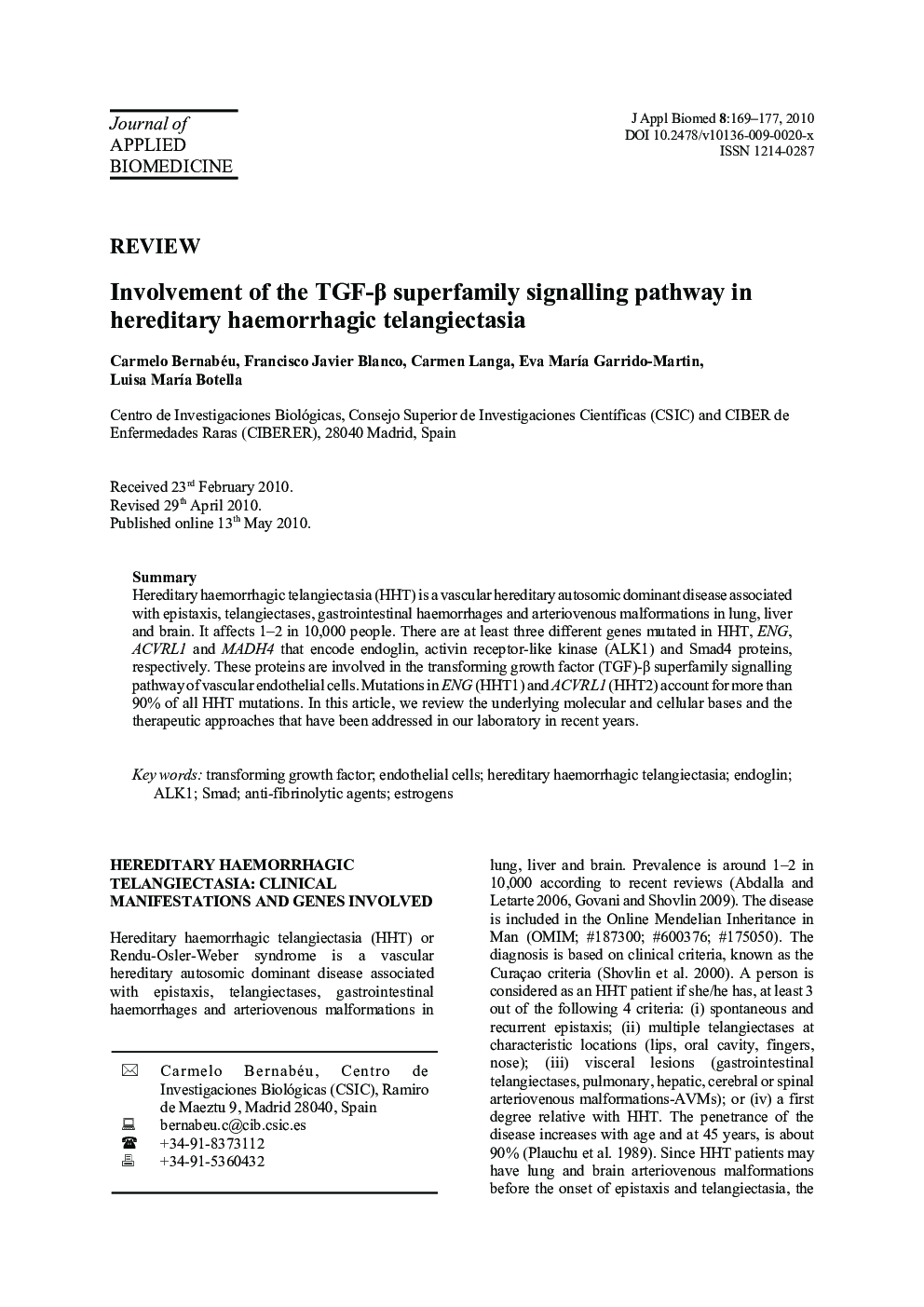| کد مقاله | کد نشریه | سال انتشار | مقاله انگلیسی | نسخه تمام متن |
|---|---|---|---|---|
| 2087799 | 1080693 | 2010 | 9 صفحه PDF | دانلود رایگان |

SummaryHereditary haemorrhagic telangiectasia (HHT) is a vascular hereditary autosomic dominant disease associated with epistaxis, telangiectases, gastrointestinal haemorrhages and arteriovenous malformations in lung, liver and brain. It affects 1–2 in 10,000 people. There are at least three different genes mutated in HHT, ENG, ACVRL1 and MADH4 that encode endoglin, activin receptor-like kinase (ALK1) and Smad4 proteins, respectively. These proteins are involved in the transforming growth factor (TGF)-β superfamily signalling pathway of vascular endothelial cells. Mutations in ENG (HHT1) and ACVRL1 (HHT2) account for more than 90% of all HHT mutations. In this article, we review the underlying molecular and cellular bases and the therapeutic approaches that have been addressed in our laboratory in recent years.
Journal: Journal of Applied Biomedicine - Volume 8, Issue 3, 2010, Pages 169–177